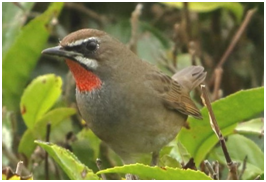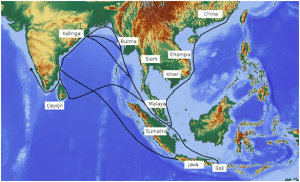DAILY CURRENT AFFAIRS (NOVEMBER 18, 2022)
INDIAN POLITY AND GOVERNANCE
1. THE PLACES OF WORSHIP (SPECIAL PROVISIONS) ACT, 1991
THE CONTEXT: Recently, the Varanasi court rejected the application of the Anjuman Intezamia Masjid Committee challenging the maintainability of a suit seeking court direction to worship the “Shivling” said to have been found in the Gyanvapi mosque complex.
THE EXPLANATION:
- The Places of Worship Act 1991 was passed by parliament during the Ram Janmabhoomi movement.The Act was introduced to promote peace, harmony and brotherhood.
- The main objective of the Act is to maintain the religious character of any such place as it existed on the 15th day of August 1947 (at the time of Independence).
- The act prohibits conversion of any place of worship or changing the religious character of any place from its status at the time of Independence.
- The main purpose behind the Act was to check and control communal hatred and promote peace and harmony in the country.
- The 1991 Act covered all disputed sites to which religious groups had raised a claim.
- The Ram Janmabhoomi-Babri case was excluded from the provision of the Act.
- Section 4(2) of the Act says that any legal proceeding with respect to the conversion of the religious character of any place of worship existing on August 15, 1947, pending before any court, shall be dropped and no fresh suit or legal proceeding shall be initiated.
Criticisms surrounding the law:
The law has been challenged on the ground that it bars judicial review, which is a basic feature of the Constitution, imposes an “arbitrary irrational retrospective cutoff date”, and abridges the right to religion of Hindus, Jains, Buddhists and Sikhs.

THE SCIENCE AND TECHNOLOGY
2. THE MISSION PRARAMBH
THE CONTEXT: Recently, India’s first privately developed launch vehicle, Vikram-S, blasted off on its maiden flight from the Indian Space Research Organisation’s (ISRO’s) Sriharikota spaceport.
THE EXPLANATION:
- The mission, named Prarambh, or ‘the beginning’, marks the Indian private sector’s first foray into the promising space launch market. The liftoff was at 11.30 am IST.
Mission Prarambh, Vikram S Rocket: In the names of Sarabhai and Kalam
- The rocket has been developed by Hyderabad-based Skyroot Aerospace, a company that was started in 2018. It is called Vikram-S. It is named after Vikram Sarabhai, the founder of India’s space programme.
- “The Vikram-S rocket is a single-stage sub-orbital launch vehicle which will carry three customer payloads and help test and validate technologies in the Vikram series space launch vehicles.
- The company is designing three Vikram rockets that will use various solid and cryogenic fuels. The Vikram series of rockets are among the few launch vehicles that have their core structure built using carbon composites. The thrusters used for spin stability in the vehicle have been 3D printed.
- The engine used in the launch vehicle is named after former president Dr A P J Abdul Kalam. The performance of the ‘Kalam-80’ will be one of the key areas that the company will monitor during the flight of Vikram-S.
More coming from private sector
- Although Skyroot is the first private company to launch its rocket, others are not far behind.
- Agnikul Cosmos, whose semi-cryogenic Agnilet engine was test- fired for 15 seconds this week at ISRO’s vertical testing facility at Thumba Equatorial Rocket Launching Station (TERLS), Thiruvananthapuram. And ISRO’s Small Satellite Launch Vehicles (SSLV) are also likely to be manufactured and operated by private players soon.
- Regarding the entry of private players in the space sector in India, ISRO chairperson said that around 100 start-ups have registered with the space agency and are working closely with it in “various domains of the space sector”.
Government step to inclusion of private player in space industry:
Several steps have been initiated towards opening the space sector for private entities in a phased manner.
- In the 2019 budget, the government announced the setting up of New Space India Limited (NSIL) with a mandate to mass-produce and manufacture small satellite launch vehicles (SSLVs) and polar satellite launch vehicles (PSLVs) in partnership with the private sector through technology transfer.
- The Draft National Space Policy 2020 was thus unveiled with the aim to increase public-private partnerships in space research and exploration activities. Instead of only partnering on the manufacturing and logistical side of operations earlier, private players were now given access to ISRO’s infrastructure, technical resources and data to grow.
- In addition, the Union Cabinet in 2020 approved the creation of the Indian National Space Promotion and Authorisation Centre (IN-SPACe) to act as a single-window, independent nodal agency between ISRO and private entities to utilise India’s space resources efficiently.
- Recently, India’s space agency unveiled a draft “Humans In Space Policy 2021” that would look at facilitating participation of non-traditional players in undertaking space activities.
Indian private startups in space industry:
Several Indian startups have started their operations. Some of the startups include:
- Digantara: It is an Indian private company working to secure long-term space flight safety by developing space debris tracking and monitoring services.
- Bellatrix Aerospace: Headquartered in Bangalore, it is an Indian private aerospace manufacturer and small satellite company.
- Tathya Earth: The company leverages deep learning algorithms for satellite imagery and maritime data to identify important real-time trends in the global economy.
- Skyroot,A startup founded by two former ISRO scientists. The company is building “Vikram” rockets from scratch, which are the first brand of rockets made by the private sector in India.
- Agnikul Cosmos, a startup founded by two 21-year-old college students became the world’s first company to successfully test a 3D printed rocket engine, which is a new and upcoming tech in the space industry and is predicted to replace conventional assembly models.
ENVIRONMENT, ECOLOGY AND CLIMATE CHANGE
3. SIBERIAN RUBYTHROAT RECORDED IN THE NILGIRI
THE CONTEXT: Recently, a rare winter migrant, Siberian rubythroat (Calliope calliope), has been recorded in the Nilgiris.
THE EXPLANATION:
The Siberian rubythroat is a ground-loving songbird. The male has a red throat edged with a narrow black border and a broad white border. Females lack brightly coloured throat and borders.
- The Siberian rubythroat is a ground-loving songbird. The male has a red throat edged with a narrow black
 border and a broad white border. Females lack brightly coloured throat and borders. Each year, bird watchers from across south India watch for winter migrants to the Nilgiris.
border and a broad white border. Females lack brightly coloured throat and borders. Each year, bird watchers from across south India watch for winter migrants to the Nilgiris. - The Siberian Rubythroat is a ground-loving songbird of Asia. They primarily breed in Siberia, while wintering in southern and southeastern Asia. While very similar in overall appearance to thrushes, they may more properly be classified as Old World flycatchers, and are now often placed in the family Muscicapidae instead of the thrush family Turdidae.
- They have occasionally wandered outside of their normal breeding and wintering range, particularly in Eurasia where they have been found as far west as Great Britain on occasion. In North America, they are primarily known from several sightings on islands off the coast of Alaska.
- Habitat: Found in brushy forest clearings, edge of taiga or boreal forest, shrubby streamside thickets, or other similar semi-open habitats with available brush.
- Migration: During the summer they are found as breeding birds in Siberia. They move to eastern India, Thailand, Indonesia, and other nearby countries for the winter.
- IUCN STATUS: Least Concern.
PRELIMS PERSPECTIVE
4. BALIYATRA: CELEBRATING ODISHA’S ANCIENT LINKS WITH INDONESIA AND SOUTHEAST ASIA
THE CONTEXT: During the G20 Summit, Prime Minister mentioned Baliyatra, literally ‘voyage to Bali’, one of the country’s largest open-air fairs that commemorates the 2,000-year-old maritime and cultural links between ancient Kalinga and Southeast Asia.
THE EXPLANATION:
- In his address to the Indian diaspora in Bali on the sidelines of the G20 summit, Prime Minister mentioned the annual Baliyatra on the banks of the Mahanadi in Cuttack, which celebrates the ancient trade relations between India and Indonesia.
- This year’s Baliyatra, which concluded on Thursday, also found a place in the Guinness World Records for achieving an impressive feat of origami, the creation of beautiful paper sculptures.
Historical significance
- Baliyatra, literally ‘voyage to Bali’, is one of the country’s largest open-air fairs, which is organised every year to commemorate the 2,000-year-old maritime and cultural links between ancient Kalinga (today’s Odisha) and Bali and other South and Southeast Asian regions like Java, Sumatra, Borneo, Burma (Myanmar) and Ceylon (Sri Lanka).
- The origins of the festival, which begins on Kartik Purnima (full moon night in the month of Kartik) can be traced back more than 1,000 years. The Bay of Bengal region had several ports, and sadhavas (traders) traditionally began their voyage across the sea on this auspicious day, when the winds were favourable for the boats, known as boita, to sail.
- According to historians, popular items of trade between Kalinga and Southeast Asia included pepper, cinnamon, cardamom, silk, camphor, gold, and jewellery.
- Besides the cultural and historical aspects, Baliyatra has an important commercial dimension. It is a time when people purchase everything from automobiles and electronic devices to local artisanal products at prices that are comparatively low. The district administration allots more than 1,500 stalls to traders through an auction, and the fair is estimated to see business worth more than Rs 100 crore over its nine days.

5. THE EXCELL AWARDS-2022
THE CONTEXT: In a significant development and recognition to the country’s efforts in improving access to modern family planning methods, India is the only country to have received the Leadership in Family Planning (EXCELL) Awards-2022 in the ‘country category’ at the International Conference on Family Planning held in Pattaya city, Thailand.
THE EXPLANATION:
- India has made outstanding progress not only in improving access but also adoption of modern contraceptive methods enabling couples to make informed choices about family planning. These are reflected in the National Family Health Survey (NFHS) – 5
- As per NFHS-5 data, overall Contraceptive Prevalence Rate (CPR) has increased substantially from 54 percent to 67 percent in the country, from NFHS-4. Similarly, unmet needs of family planning have witnessed a significant decline from 13 per cent to 9 per cent. The unmet need for spacing has also come down to less than 10 per cent.
- The total ‘demand satisfied’ for family planning among currently married women aged 15-49 in India increased from 66 percent in 2015-16 to 76 percent in 2019-21 which has already crossed the SDG target of 75 set globally for 2030. The government’s focus on improving easy and affordable access to modern contraceptives are reflected in the fact that 68% modern method contraceptive users obtain their method from the public health sector, as per NFHS-5 data. Mission Parivar Vikas, one of the government’s flagship programmes, to reduce unmet needs in family planning, has also been a critical factor in the overall improvement.
- India’s efforts in improving family planning demonstrate the progress the country is making towards achieving the SDG targets on women and maternal health.
What is ICFP?
- The International Conference on Family Planning has convened the global development community around a shared vision of universal access to family planning since 2009.A network of advocates, researchers and scientists, community and government leaders, health practitioners, economists, conveners, civil society members, and young people.
- The 2022 theme, “Family Planning & Universal Health Coverage: Innovate. Collaborate. Accelerate.” underscores our belief that family planning should be a core component of universal health coverage. Not only is access to family planning and reproductive health services a pillar of good personal health, it is also a critical component of a country’s economic health. ICFP 2022 will be a strategic benchmark as the community prepares to recommit to a goal of universal access by 2030.
VALUE ADDITION:
Mission ParivarVikas- The Government has launched Mission Parivar Vikas for substantially increasing access to contraceptives and family planning services in146 high fertility districts with Total Fertility Rate (TFR) of 3 and above in seven high focus states. These districts are from the states of Uttar Pradesh, Bihar, Rajasthan, Madhya Pradesh, Chhattisgarh, Jharkhand and Assam that itself constitutes 44% of the country’s population.
6. COASTAL DEFENCE EXERCISE SEA VIGIL-22
THE CONTEXT: Recently, Exercise Sea Vigil-22, the Coastal Defence exercise was conducted in Visakhapatnam:
THE EXPLANATION:
- The exercise involved participation of more than 17 Government agencies from nine Coastal States and four Union Territories that are involved in the Coastal Defence Mechanism and Coastal Security construct. More than 500 surface assets from the Indian Navy (IN), Coast Guard (CG), States Marine/ Coastal Police, Customs, Forest Department, Port Authorities and private operators participated in the exercise.
- The exercise also validated the technical surveillance infrastructure called the National Command, Control, Communication and Intelligence (NC3I) Network. The Information Management and Analysis Centre (IMAC) at Gurugram and its various nodes across IN and CG stations were exercised for coordinating the surveillance and information dissemination mechanism.
- The envisaged objectives of the exercise were met by the whole-hearted participation of all stakeholders. The cooperation and coordination amongst various agencies involved is a reassuring sign of progress made in the realm of Coastal Defence and the exercise would go a long way in enhancing Coastal Defence and National Security in the maritime domain.
THE PRELIMS PRACTICE QUESTION
QUESTION OF THE DAY
Q1. Drug ‘sodium pentothal’, seen in news, is used for-
a) Clinical trials
b) Narco test
c) Polygraph test
d) Treatment of TB
Answer: B
Explanation:
- In a ‘narco’ or narco analysis test, a drug called sodium pentothal is injected into the body of the accused, which transports them to a hypnotic or sedated state, in which their imagination is neutralised. In this hypnotic state, the accused is understood as being incapable of lying, and is expected to divulge information that is true.
- Sodium pentothal or sodium thiopental is a fast-acting, short duration anaesthetic, which is used in larger doses to sedate patients during surgery. It belongs to the barbiturate class of drugs that act on the central nervous system as depressants.
- Because the drug is believed to weaken the subject’s resolve to lie, it is sometimes referred to as a “truth serum”, and is said to have been used by intelligence operatives during World War II.